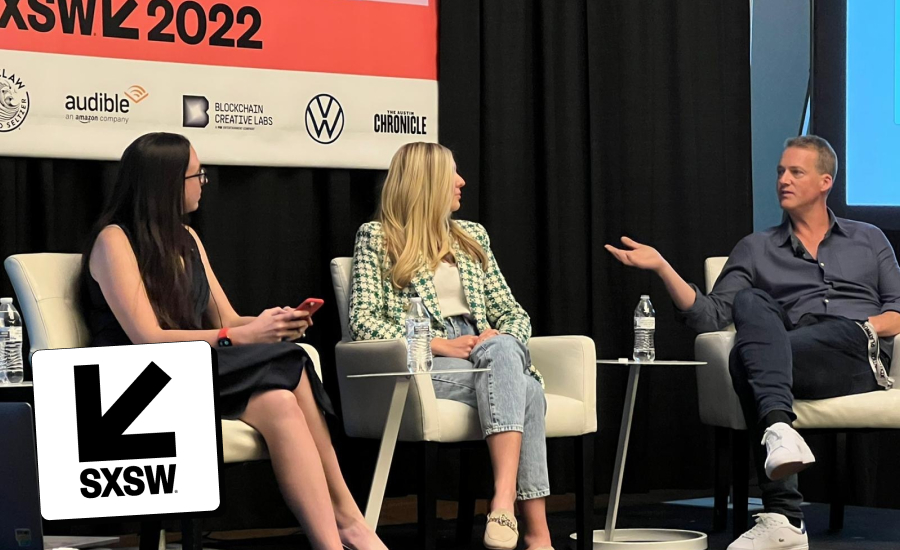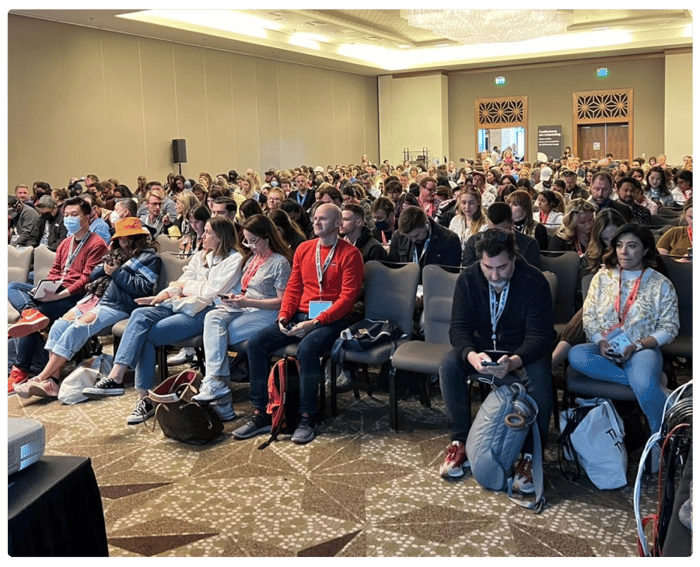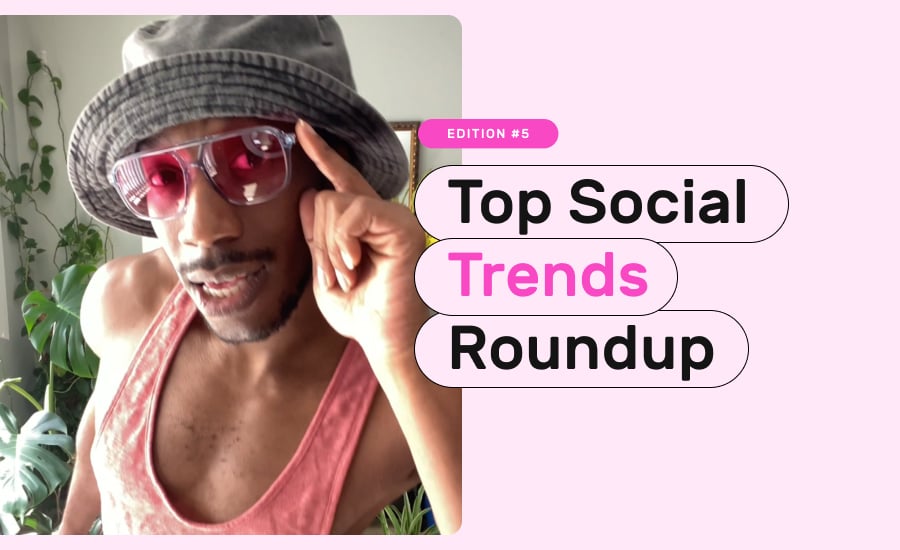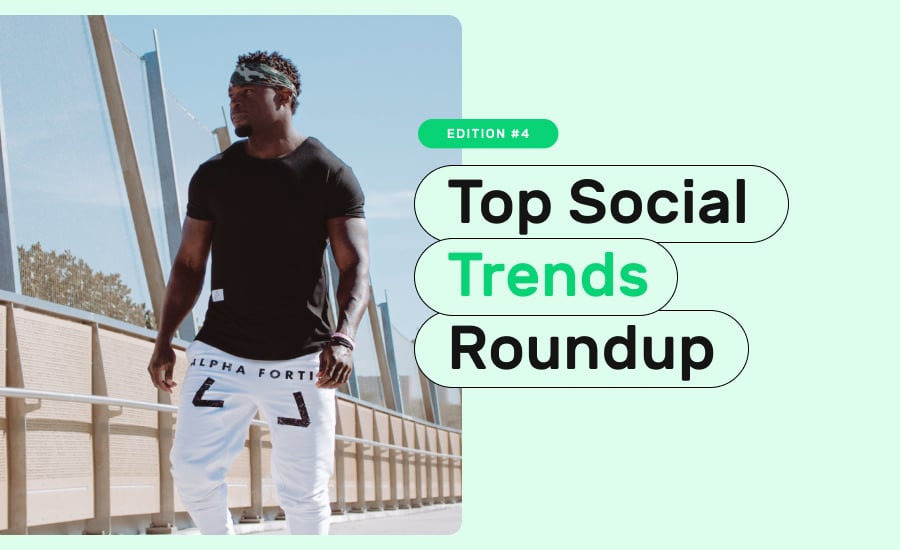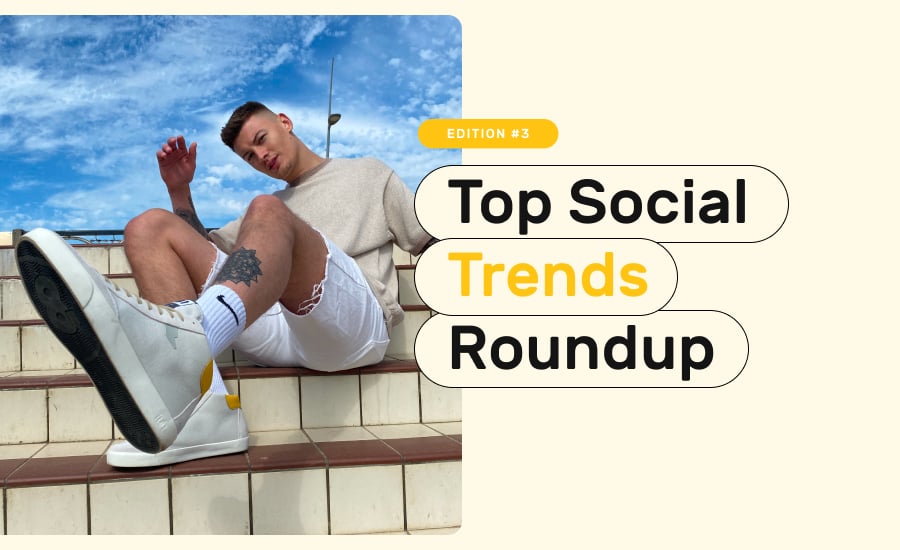South by Southwest, the festival that celebrates the convergence of tech, film and music brings creatives from all over the world to Austin, Texas. Among them were TRIBE founder, Jules Lund, Media Deal Reporter from Axios, Kerry Flynn and The Information’s Kaya Yurieff tackling the question; Has TikTok Won The Creator Wars?
THE SYNOPSIS:
Why are the social platforms in a frantic bidding war to train and retain Creators? TikTok committed $1 billion into creator initiatives, Instagram and Facebook matched that, YouTube has a $100m fund while Snap has been paying top Creators $1M a day.
Platforms clearly understand what the fastest-growing DTC brands have known for years; Creators are key to social success and your bottom line. Billion-dollar empires have been built by millennial founders who’ve cleverly empowered their own customers to become their marketing arm, creative department and sales force through s-comm.
But why are the majority of marketers still struggling to succeed in social? Perhaps the answer lies in TikTok’s positioner; ‘Don’t Make Ads. Make TikToks’.
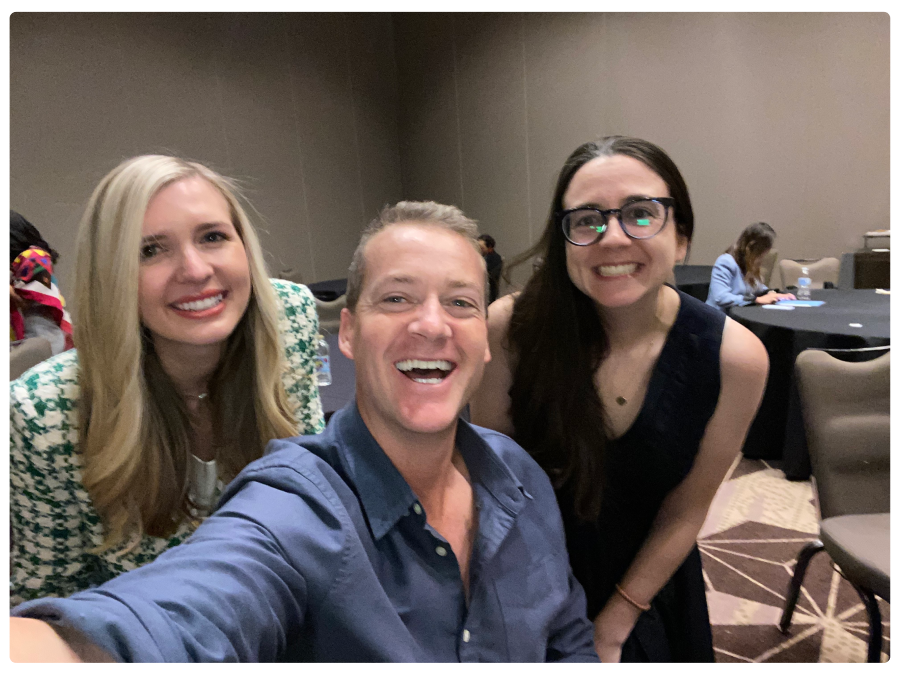 L-R: Kaya Yurieff, Jules Lund and Kerry Flynn
L-R: Kaya Yurieff, Jules Lund and Kerry Flynn
Here’s a breakdown of some of the top insights from the Creator economy obsessed panel.
Why is there a Creator War?
Let’s start at the beginning. Kaya believes, “Creators have more options now. A few years ago, it was Instagram and YouTube. Now, with TikTok, Patreon and other startups, there are more options for Creators.
It’s not enough to just provide a platform for people to distribute their content to an audience, there’s more competition and they have to step up.
At the same time, ad-driven models have been under attack, Apple instituted privacy changes, there’s more monetization. It’s actually a new business model. All of these factors have created this war of online talent.”
Jules recalls, “It’s funny, five years ago no one wanted Creators because they were called influencers. It was a dirty word. Now, everyone is discovering they solve the content bottleneck. Social platforms are saying to brands “Hey, spend more money on our platform” and brands respond with “we would if we had more mobile-first assets”. They go to a creative agency who are set up to produce ‘one asset to many', like a TVC or billboard, rather than the variety of assets needed to target precise audiences with precise messaging on social.
Creators are the firehose to produce the fresh content you need every day. They’re more affordable and their content performs well because they’re real people. They’re not just the solution for the brand, they have now become a critical need for the social platforms.
Because, if you win the Creator, you win the users (who are engaged by the Creators).
If you win the users, you win the advertisers because you’ve got the eyeballs.
And if you win the advertisers you can fund the Creators.
This flywheel is why the Creator war started. Right now the problem is the social platforms don’t have the time to build the machine for advertisers to spend money on Creators, so they are paying out Creators from their own war-chests. Yet we know this is unsustainable.“
The biggest battle: TikTok vs Instagram
For Kaya, “The risk for Instagram now is becoming an app that has too much going on. YouTube and TikTok have clear use cases; watch videos, be entertained and follow Creators. Instagram’s use case is getting confusing. You have friends and family, Creators, brands, shopping, Reels. Their core value, in the beginning, was simplicity. If they’re chasing TikTok, that might not be the right decision.”
Jules puts it down to timing, “I feel for Instagram and Facebook because they’ve solved all the problems for TikTok. In the beginning there were no ads on Instagram, it was a big deal when they launched. Everyone thought the platform wouldn’t survive it. But they ironed a lot of stuff out and designed a really good monetisation play.
I don’t think they’re going slow, I just think TikTok is going fast and they’re able to jump the gun with commerce because they didn’t have to go through years of trial and error.“
The Creator fund
Kerry questions the effectiveness and sustainability of social platforms’ Creator funds. These companies have so much money, can they keep cutting cheques in order to retain Creators?
Kaya’s take was, “Snapchat is a really good case study for Creator funds. It’s an effective way to get people there initially, but it doesn’t mean they’ll stay there. Snapchat came out swinging and said, “We’re giving away a million dollars a day”. Eight people were made millionaires, some Creators made $50k for posting one video. But there was no staying power for the Creators.
TikTok launched with a $200M fund that expanded to a billion dollars. That number hasn’t grown since, but the number of Creators has and their slice is getting much smaller. I’m always hearing Creators say, “I was killing it in the early days of the Creator fund, now there’s too much competition.”
Retaining Creators
If Creator funds aren’t sustainable, Kerry questions what other ways platforms can effectively retain Creators?
For Kaya there are a few options, “One, there has to be an audience there. Look at Clubhouse, some people built amazing communities, but it’s fizzled out because the audience isn’t there, so Creators aren’t there. You need robust competitive features and be easy to use. TikTok is popular because the editing tools are super easy to use.
Then there are relationships. I’ve heard of TikTok Creators being contacted strategically by Instagram to be ‘their point person’. This is hard to do at scale but being strategic with Creator partnerships is something YouTube has done well. Since 2007, they’ve been sharing their ad revenue with Creators, so they’ve been ahead of the game.”
A topic near and dear to Jules’ heart, Creator Marketplaces, are they an effective strategy?
“Yes and no. I’ve been working on our platform for 8 years, and you realise brands don’t just want marketplaces to connect with Creators. They also want campaign management and service. Platform marketplaces enable discovery and a lot of one-to-one, but most advertisers are likely going to need something more sophisticated, and they need a layer of support.
For Creator marketplaces to survive, they have to be the hub. I predict on TikTok there’ll be no way you’ll be able to just create a sponsored post and put #ad, unless the Creator inputs the code generated by the TikTok Creator Marketplace. On Instagram anyone can start having these collaborations, TikTok may block it and it’ll all be filtered through their marketplace. It’s not necessarily about control, they’ll have partner networks like agencies or tech platforms who get accredited and push their Creators to create an account in the hub.
At TRIBE, we want to add the seasoning that can’t be done there. You can work with 50 Creators at once, have your own app, take care of all payments, legals and messaging, have Creators come to with a personalised pitch on how they’d love to bring your campaigns to life in their signature style. Creator marketplaces will be here to stay.”
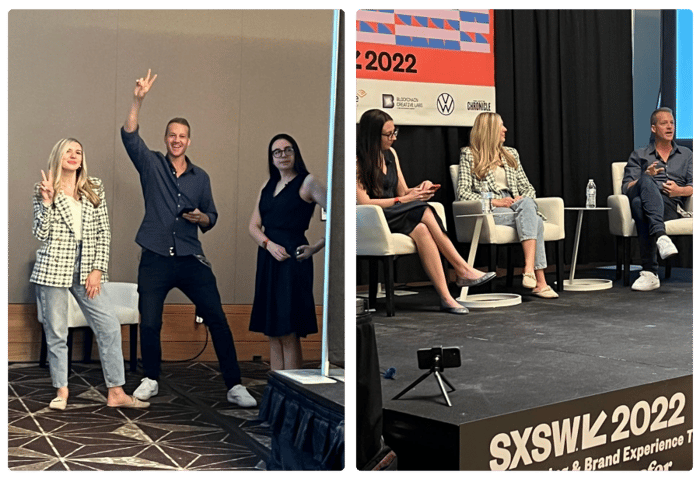
Shopping: TikTok made me buy it
TikTok is into commerce. They ran an activation around viral campaigns that caused products to sell out because “TikTok made me buy it”. They hosted a party at SXSW22 called “The After Hours Market”. It’s fair to say they’re creating a dream scenario for any advertiser to want to work on the platform.
Here’s what Kaya thinks, “Rebecca Jennings at Vox did a column on viral products, it’s a very real phenomenon. There are pitfalls though, there was one beauty foundation people were going crazy for and the product wasn’t good, it was cakey, and they started going viral again for the wrong reason. Marketers have to be careful”
Jules’ take, “Live shopping is monstrous. A Creator, Lipstick Brother sold US$1.9 billion worth of sales in one day doing live shopping. For instance, in the UK they’ve got say 500 Creators the TikTok team have whittled down, who are sent the product, lights etc. The brand pays £1,000 for them to get on for two hours selling everything from iPhones to hair straighteners and get 10% of the sales. Obviously, TikTok controls the algorithm so they can open the floodgates to create a case study to onboard other brands. The Creator promotes the product and users can buy directly from the video. This is when influencer marketing becomes affiliate sales and solves the biggest problem we’ve had; measurement.”
Shopping: Instagram’s strategy
We’ve all searched for products online to later be served ads on Instagram for variations of that product. And it works, sometimes it feels like magic (or our phones listening to our conversations) because Instagram serves you a variation you want more.
Kaya looks at Instagram’s commerce and ad strategy differently. “When I think of commerce I think of Checkout, I’ve bought a lot from Instagram ads but nothing on the app. It has the mechanics to work well, but Instagram hasn’t released any meaningful stats so my sense is it’s not. Users may interact with a shop, but we know if we’re sending them to another browser, the more steps people have to take the more likely they won’t follow through.”
Jules agrees, “It’s such a critical piece. The ability to add your shipping address and credit card details is critical. Instagram hasn’t rolled that functionality out globally. The branded content ad is the art and science together at last. An influencer post that has ad targeting tools, you can add the CTA, attribute and amplify it. Marketers are still getting their head around it, it’s the absolute magic part. If you’re doing influencer marketing and not amplifying it, you’re missing out on all the great stuff.
And then TikTok came along with Spark ads and said “Don’t make ads, make TikToks.” That’s the future, branded content and Spark ads, amplifying real people is the future of advertising.”
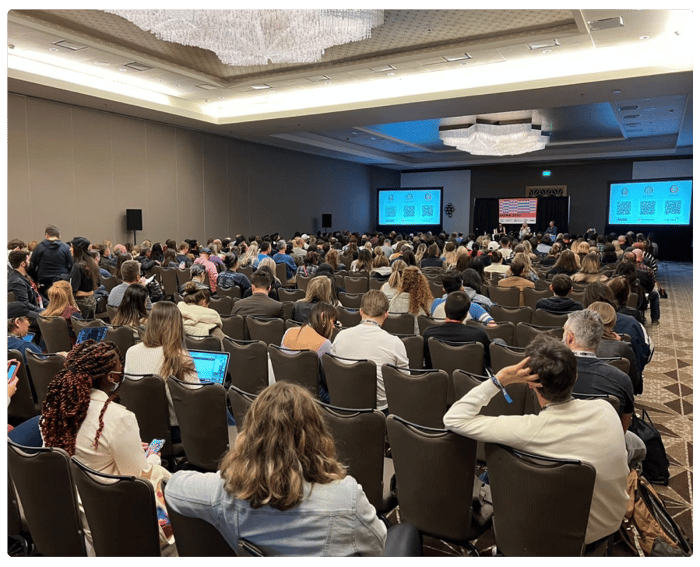
So… has TikTok won?
Kaya diplomatically avoids the question with, “I don’t think there needs to be a winner. No Creator is on one single platform. Some may be bigger on one but use them all for different purposes. A TikTok Creator might post totally different content on Instagram. TikTok is the undisputed leader in short-form video, in minting new Creators and at discovery and helping Creators build a following really fast. But I don’t think there has to be a winner.”
Jules climbs off the fence slightly with, “I think they’re in the lead, what they’re doing with the Creator economy is what we’ve been waiting for. Millennial born empires like Glossier and Gymshark already knew you shouldn’t market at your customers, you market with them through three pillars; community, content and commerce. It’s taken someone like TikTok saying “Don’t make ads. Make TikToks” to help a much-needed paradigm shift; that Creators aren’t just here to craft pics and clips FOR your ads, their posts should BE your ads.
Maybe the winner won’t even be a social platform. There are different types of Creators and I think that’s where it starts to branch off. You have expert Creators, influencers and entertainers. I think that’s the next thing, having different tracks and different worlds.
We can sit on the fence together because everyone’s a winner.”
While it’s too soon for a definitive answer, it’s safe to say Kerry, Kaya and Jules had a great time asking the question and the audience loved watching them answer it.
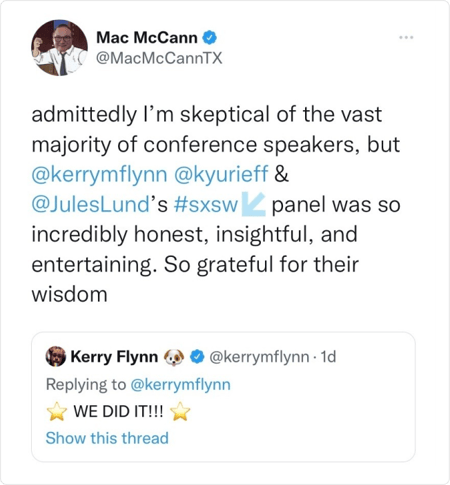
To stay up to date on everything there is to know about the booming Creator economy, sign up for Kaya’s brilliant Newsletter. For a daily dose of news and analysis of media, social platforms and streaming subscribe to Kerry’s newsletter with Axios.
If you’re ready to take your community, content & commerce to the next level with Creators, reach out to our team at TRIBE.

